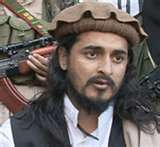 As I discussed in a previous post, it appears that there may be a potential rift developing among the top leadership of the Afghan Taliban. Last month, the Taliban officially announced their plan to replace Taliban Deputy Leader (and de facto leader of day-to-day operations) Mullah Abdul Ghani Baradar with two different individuals - an unusual move that prompted many to question the decision of Taliban leader Mullah Omar. According to multiple reports, all military operations would be overseen by Mullah Abdul Qayim Zakir (for more on him, see my previous post here) and all logistics/support operations would be the responsibility of Mullah Akhtar Muhammad Mansoor.
As I discussed in a previous post, it appears that there may be a potential rift developing among the top leadership of the Afghan Taliban. Last month, the Taliban officially announced their plan to replace Taliban Deputy Leader (and de facto leader of day-to-day operations) Mullah Abdul Ghani Baradar with two different individuals - an unusual move that prompted many to question the decision of Taliban leader Mullah Omar. According to multiple reports, all military operations would be overseen by Mullah Abdul Qayim Zakir (for more on him, see my previous post here) and all logistics/support operations would be the responsibility of Mullah Akhtar Muhammad Mansoor.A recent article in the UK's Times Online provided additional insight into this developing rift, quoting sources within the Taliban and on the ground in Afghanistan who have confirmed the growing tensions within the Taliban's Inner Shura (top council of leaders). According to a tribal elder in Southern Afghanistan with strong links to the insurgency, "When Mullah Baradar was arrested, Mullah Mansoor thought he would be his replacement...when Zakir was introduced as the defense minister, [Mansoor] was disappointed." According to the report, this resentment has caused a bitter power struggle between the two, forcing subordinate commanders to choose sides. Mullah Mansoor, who was appointed as the Kandahar province shadow governor in 2007, felt he was the logical choice to run all military operations in the Southern region. He reportedly asked the Taliban's leadership council for military control of Helmand and Kandahar after Baradar was detained, but his efforts were blocked by Mullah Zakir and his supporters. Zakir, who is also from Helmand province (and spent several years detained at Guantanamo Bay) and has a reputation as a brutal and aggressive fighter, replied that, "I'm the defense minister. I control all of Afghanistan, we should work together."

As US and ISAF forces continue shaping operations in preparation for an offensive in Kandahar, it will be critical for us to take advantage of this growing rift within the Taliban's ranks. US and partner ISAF forces should make this a major information operations (IO) theme and interweave it within both their lethal and non-lethal operations. During key leader engagements (KLEs) and shuras, leaders should draw attention to the feud, gain more information about it, and highlight the fact that Taliban leaders are only out for themselves and care little about the people of Afghanistan. If the results of the poll quoted above are truly representative of the people's sentiment in Kandahar, then we have a long way to go in terms of discrediting the Taliban. The rift theme should also be heavily played upon in IO products to support our lethal targeting and exploitation operations - making a concerted effort to leave stay-behind fliers/leaflets and spread the word that different leaders and commanders are turning on each other and providing information to US forces. This will help to exacerbate the already-existent feud and increase paranoia across the organization. I've seen firsthand how effective this can be in dividing insurgent organization and creating additional targeting opportunities for US and partner forces.




.jpg)






Pat:
ReplyDeleteConcerning the major IO theme, Michael Yon (in his latest report from SWJ entitled "Battle Kandahar) shows once again how important building relationships with locals are.
http://smallwarsjournal.com/blog/journal/docs-temp/422-yon.pdf.
As you and I always discuss (and sometimes disagree) whether or not it is best to take a ground-up approach or top-systematic approach (as both have their merits), I think the piece gives ground-perspective on shaping an effective IO scheme that will reach the people directly to incorpotate both approaches.
Most interesting to me is how to incorporate local-lingo (i.e. Shah Tut) while communicating either directly through pamplets as you suggest or vis-a-vis a translator (i.e. Daoud).
Also, I was intrigued with Captain Hanlin, who told the locals to use "shovels and tools, and...all these rocks. Just bash ’em in the head. Kill them. Keep their bodies. Get on a motorbike and come tell us, and we’ll pay you for killing them and there will be no further recourse. Just kill them. You have them outnumbered."
Yon notes, "Cell phone coverage does not exist in Baghtu Valley. [Locals] are on their own. They might kill the first group, but the [Taliban] that followed would come for vengeance. Neither [US forces] nor the Afghan government can protect them."
So, an IO must include safeguarded parameters, of course, to not threaten populations who are support for KLE's and shuras. We all seek tp revent revenge on the Taliban's "increased paranoia." What say you?
Check out this excellent bio of Mullah Abdul Qayim Zakir in the Christian Science Monitor. Provides some interesting insight into his childhood and previous role in the Taliban. Also, some insightful comments on how he's currently viewed by Taliban members. The major shortfall of the article is it fails to address the reported power struggle between Zakir and Mansoor.
ReplyDeleteI truly enjoyed your post. Keep up the great effort.
ReplyDeleteCollege Research Papers
Thank you for this post. This is very interesting information for me.
ReplyDeleteGreat and useful article. Creating content regularly is very tough.Thanks you.Write more.
ReplyDeleteHello! I just read this information and i can tell you that this article is useful. Thank you for sharing it.
ReplyDelete